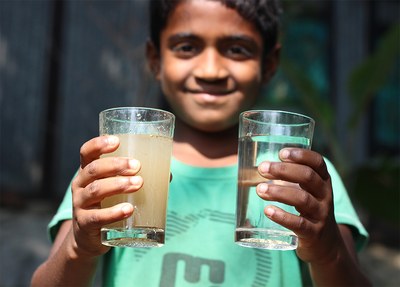Arsenic contamination has been threatening the country’s public health from a very long time. This contamination spreads through ground water which is excavated by shallow and deep tube-wells. The country has an estimated 10 million shallow tube wells, with 140 million inhabitants preferring these well water. Approximately one-third of the country is highly impacted by arsenic. Since the first discovery of groundwater arsenic in 1993, government and international agencies have worked to test wells and inform households about their water status, with hope that safe wells could be shared by many. The first effort to identify the arsenic pollution involved the field-testing labeling of 51,000 tube wells by UNICEF and the Bangladesh Department of Public Health and Engineering.
Max Foundation’s implementing partner VERC (Village Education Resource Center), took up an initiative of a water quality test as a part of an activity of the Stunting Free Village project. They ran the test in two unions of Chhatak Upazila named Noarai and Islampur. The test covered 3731 tubewells of the two unions out of which 1358 turned out to be arsenic contaminated and 2373 were safe to use. This rate of arsenic taintation can cause numerous diseases, even resulting into death. The people of the unions are warned and discouraged to use the polluted water for drinking and cooking purposes after the polluted sources have been identified by through water testing. Though arsenic can be removed or reduced by conventional water treatment processes, these are time consuming and expensive process. The initial solution to this is to stop using the polluted tubewells.
Click to read the report











 (24)
(24)